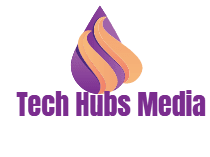
Mobile application development market is
showing no signs of slowing down. As per one Statista research,
revenue from mobile apps is expected to increase to $613 billion by 2025.
(Source)
Even though app revenue is expected to
rise, a staggering 56% of users
uninstall an app within seven days. Some of the reasons for uninstallation
include security and privacy concerns, sluggish performance, annoying
notifications, use of too much device memory, and many others.
While many of these concerns are valid,
you can easily avert some issues like performance, device memory usage, and
others by using a well-optimized mobile app development framework.
Here are a few excellent mobile framework
recommendations for you to consider in 2022:
Top 5 Trending Mobile App Development Frameworks in 2022
As per the 2021 Statista survey,
the following mobile app development frameworks are widely used by developers.

(Source)
They are likely to continue on the same
trajectory in 2022 as well. So, let’s get to know what’s new in 2022:
1. Flutter
As you can see, Flutter currently sits at
the top as 42% of developers use the framework for mobile app development.
Also, the annual Flutter 2022 strategy
doc shared by the team at Google mentions that there are nearly over 500,000
apps that use Flutter.
As per this document, Flutter, as an
open-source project, will likely continue to focus on making strategic plans
with better transparency and clarity. This UI development kit is comparably
faster, productive, pervasive, and offers an elegant UI kit for creating varied
mobile applications.
Further, the Flutter team plans to
improve developer experience, introduce quality support for multiple platforms,
enhance the framework, engine, and language, and strengthen the security
fundamentals. All these make it worth hiring a mobile app development company
for Flutter app development.
2. React Native
React Native is another trending
cross-platform mobile app development framework that has gained immense
popularity. The framework is adorned with a pool of open-source libraries and
components for faster app development. In addition, it offers simple yet
interactive UIs for a top-notch user experience.
The key USP of React Native is that the
framework is continuously getting improvements and enhancements. It has been
six months since 2022 started, and the team at Facebook has already announced
three version upgrades of the framework.
With the latest version, React Native now
supports React 18 — another web app development framework from Facebook.
Further, it includes support for Bundled
Hermes, a new architecture, and many other bug fixes, upgrades, and changes
that improve the mobile app development experience.
3. Ionic
Ionic is also an excellent choice for
developing cross-platform mobile applications. It’s an open-source framework
initially built using Angular and Apache Cordova but is now rebuilt for
developers to leverage React, VueJS, and other JS-based frameworks.
This has enabled the developers to craft
feature-rich and robust mobile applications for iOS, Android, and even the
PWAs. Last year, the Ionic team announced the v6.0 that included many new
component features, declarative overlays, a bottom sheet model, and revamped
ion-datetime.
Further, the v6.1 released in April this
year also packs many component enhancements that help developers ship robust
mobile apps. Other improvements that bolster Ionic as a mobile app development
framework include faster iOS builds, secure storage, identity vault updates,
live updates for Ionic portals, and many others.
4. Xamarin
Owned by Microsoft, Xamarin is an
open-source, cross-platform app development framework used for building apps
for not only iOS and Android but also for macOS, tvOS, watchOS, and other
platforms.
The framework enjoys Microsoft's existing
.Net and C# ecosystem to empower businesses with apps that offer native-like
performance and impeccable user experience. The framework also supports Visual
Studio and various other tools, libraries, and programming languages.
Xamarin has a versatile backend
development infrastructure, diagnostic tools, application loader, and many
other solid features. Furthermore, the framework has a vast community of 60,000
contributors, which gives it a stronghold on the market.
5. NativeScript
Based on JavaScript, NativeScript is a
capable framework for developing simple to complex level apps with a
native-like experience. In addition, the framework can utilize the native APIs
of the target platforms for developing real-time cross-platform and hybrid
apps.
Besides JS, NativeScript also makes use
of CSS and not web views to render UI elements for native-like app development.
Thanks to this ability, apps developed using the framework are considered
almost native apps, which is the main USP of the NativeScript.
Recently, this community-led framework
released v8.2, which brings new features, broad memory optimization, bug fixes,
and support for iOS and Android tooling. Also, they have a plan in motion to
split the UI section into its own package to prepare the platform for broader
UI adaptability when releasing the NativeScript 9.0.
The
Bottom Line
In a nutshell, mobile application
development has significantly evolved in 2022. Keeping this in mind, we
presented the top trending mobile app development frameworks in 2022. As we
move ahead in the future, the innovation led by these frameworks will disrupt
the industry for good.
When developing your next mobile
application, hiring mobile app developers is always a great practice. However,
going for an expert mobile app development company would be even better.




.png)






0 Comments